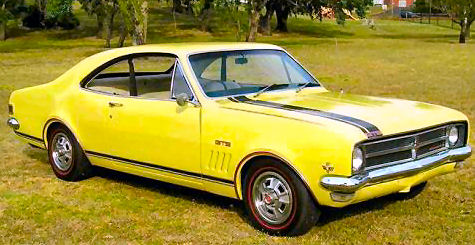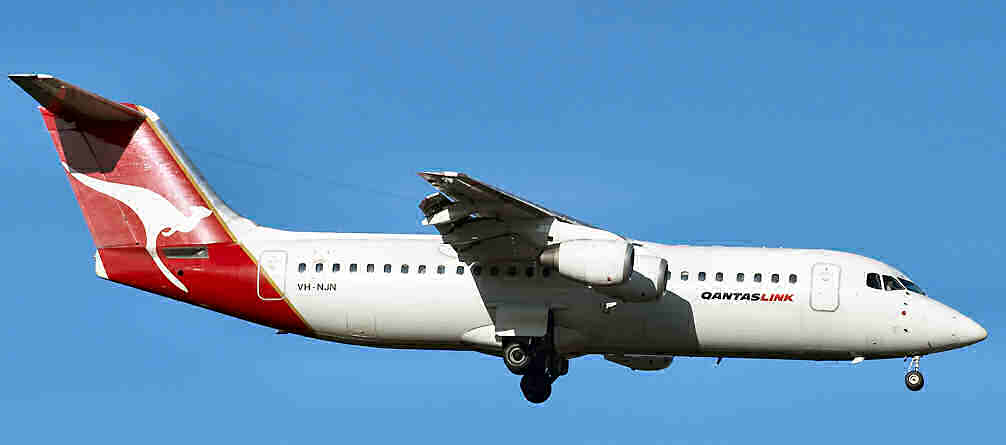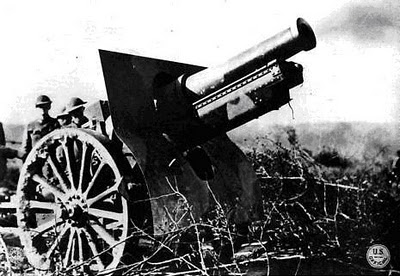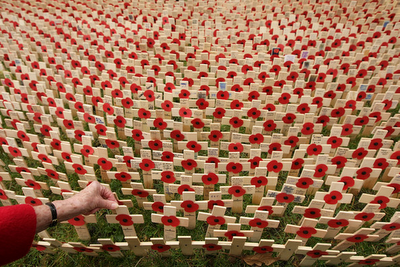|
Radschool Association Magazine - Vol 33 Page 15 |
|
Privacy Policy | Editorial Policy | Join the Association | List of Members | Contact us | Index | Links | Print this page |
|
|
|
Nambour (Qld) RAAFA Museum.
Jeanette Morrison
The Nambour and District Museum does not wait for Remembrance Day, the 11th hour of the 11th day of the 11th month of each year, to stop, ponder, and share a thought for those who served in world conflicts.
On every day of the year, the museum’s displays in the war room are a tangible acknowledgement of the day that remembers when an Armistice was signed in 1918 to end hostilities of the Great War of 1914-1918.
As part of the district’s Remembrance Day observations this year, the museum staff extended an invitation for members of the public to visit the military rooms to see the impressive collection of memorabilia from world conflicts, both personal and material.
For the first time this Remembrance Day, another Nambour son, had his war service displayed in one of the military rooms, perfectly at ease among the other memorabilia of those who took part in conflicts a long way from home. |
|
RAAFA Nambour president George Flick with the framed memorabilia of the late Jack McIntyre, former patron of the association now on display for the first time this Remembrance Day.
|
|
“Well done, old friend. Rest in peace,” George said as he put Jack’s memorabilia in its place.
Jack was the RAAFA Nambour’s patron and he had summed up his own impressive World War II flying career in a members’ update in 2008 with a simple introduction, “I was born to fly.”
Jack was interested in aviation from the age of six and was on a path to becoming a commercial pilot which began when he learned to fly in 1936. But war interrupted and he joined the RAAF on the 7th August 1940. Jack did his rookies at Ultimo NSW, after attending the engineering school at Showgrounds Ascot Vale Melbourne, where he did a fitter 2A course.
|
|
He was then posted to 23 Squadron Archerfield, Queensland. Other postings included Lowood, Narrandera, Rathmines, Swan Hill, West Lake, Townsville, Karumba, Darwin, Batchelor, Oakey, Brisbane and Lake Bogar.
Rathmines
was where Jack and his beloved Catalina Flying Boats first became
acquainted. Jack had completed an Air Gunners’ course at West Sale and
was posted to Catalina crew 43 Squadron Karumba – Norman River, Gulf
Territory, a Darwin Pacific War Zone. As part of the crew, he was
involved in mine laying,
He received a shrapnel wound , was hospitalised, crashed, grounded, then posted to 23 Squadron Oakey, a posting to Terminal Island, USA on delivery flights from USA to Australia to test and ferry, then Singapore and Changi POW camp flying POWs home, till he became a civilian again on 28 November 1945.
After the war, while living in Sydney, he took up flying privately and when he moved to the Maroochy shire bought into a Tiger Moth syndicate. He helped to start the local aero club in 1959. Jack became a glider tug pilot with 935 launchings without mishaps.
|
|
Jack McIntyre’s framed memorabilia in the Nambour and District Museum‘s war room. |
|
|
|
When he gave it away in 1977, he had an accumulation of more than 2000 hours. For his services to flying, he was awarded life membership of the Maroochy Aero Club.
“I have had a good life. Would do it all again without hesitation,” Jack poignantly recalled in 2008.
The framed memorabilia contains text about Jack McIntyre’s service history, his air-gunner’s wings WWII 1940, now 70 years old, four service medals: War Service medal 1939-1945; Australian Service Medal 1939-1945; Pacific Star 1942-1945; 1939-1945 Star, and the Catalina PBY-6A 43 Squadron RAAF Black Cat cap.
George Flick was a RAAF Nasho back in 1952 and was posted to No 1 Flight, 3 Squadron. He was trained in airfield defence and also completed a Fitter 2A course. He served for a period of six months (continuous) and then was a member of the general reserves for 5½ years.
|
|
Brisbane River Fest.
In September, as part of the annual River Festival, the people of Brisbane were treated to their last look at the F-111’s dump and burn.
The RAAF has said the final fly-past of the F-111s will take place on 3rd December, 2010, after a decommissioning parade which will be held at Amberley on the 2nd December. |
|
|
|
|
|
|
|
For many people, the F-111s were the highlight of the night of fireworks and fun. Others, the sad sacks, moaned that the jets are a global warming hazard, during a dump and burn they chew up 165 litres of fuel per second and send dogs crazy around Brisbane’s backyards.
Australia's F-111s are being replaced by the Super Hornets and the dump and burn will, unfortunately, become a thing of the past. The F-111 is the only plane capable of it because of the positioning of the fuel dump between the plane’s engines.
You can see some video of the dump and burn over Brisbane HERE.
Some people are like slinkies, not really good for anything but they bring a smile to your face when you push them down the stairs.
Ford Falcon.
Motor Trend
"He wore granny glasses, and he put out a granny car." That's how one
auto writer, quoted in Robert Lackey's excellent 1986 book,
Ford, summed up Robert S. McNamara's
tenure at Ford Motor Company, during which he launched the plain-jane
Ford Falcon compact to compete with Chevy's Corvair (right) and
Chrysler's Valiant
McNamara was of course best known as a controversial Secretary of Defence in the Kennedy and Johnson administrations, where he oversaw the escalation of America's involvement in the Vietnam War. But before Vietnam, there was the Ford Motor Company.
McNamara was one of a group of young officers from the U.S. Army Air Force's Office of Statistical Control hired by 28 year old Henry Ford II in 1946 to help rescue the ailing automaker. The "Whiz Kids" helped install fiscal and process discipline at Ford, the management of which had become ever more ad hoc as aging founder Henry Ford's dementia grew more apparent. By 1948 McNamara had assumed the role of leader of the Whiz Kids, and was clearly on a trajectory to the top. By 1955, he was general manager of Ford Division.
McNamara was never the archetypal Detroit auto executive. While most of
the Motown elite chose to live in leafy, mansion-filled suburbs like
Grosse Pointe, McNamara preferred the more relaxed campus-town
atmosphere of Ann Arbor, home of the University of Michigan. And he had
difficulty in regarding the automobile as anything more than mere
transport. He was most certainly not a car guy.
McNamara showed his iconoclastic product streak early by authorizing a four-seat Thunderbird, much to the horror of purists who saw the original two-seat T-bird as a potential rival to Chevrolet's Corvette. He was implacably opposed to the Edsel program, arguing from the outset that if Ford needed to move into the mid-price market, it would be better to simply upgrade the top-of-the-line Ford than waste money creating a new car, a new division, and a new dealer network.
McNamara was right in both cases. First year sales of the four seat Thunderbird exceeded total sales of the two-seater since launch. And Edsel, part of an ambitious plan to tackle GM's Buick, Oldsmobile and Pontiac divisions that involved building three basic bodies -- small, medium and large -- across five divisions -- Ford, Edsel, Mercury, Lincoln, and Continental -- foundered in the teeth of the Eisenhower recession. With a little help from politically adroit McNamara.
Sources inside Ford insist McNamara effectively killed the Edsel (left) before the first car had even been sold, deliberately letting slip at its launch the car would be discontinued. The day after the first Edsel went on sale in 1957, McNamara was made a group vice-president responsible for all FoMoCo cars and trucks, and he began hacking away the division's budget almost immediately. Within months he had reduced Edsel's future product plans to little more than a different grille for 1960 Fords.
Conceived in the late 50s, the Falcon was McNamara's sort of automobile: Inexpensive family transportation. But the Falcon would prove to be one of the single most important Ford cars ever made, for without the Falcon's cheap, light, simple platform there may never have been a Mustang.
|
|
|
|
|
|
Former Ford boss Lee Iaccoca claims market research had identified an emerging youth market for which the Mustang was created. But that's not how product planner Don Frey saw it. "Most of the market research stuff was done after the fact," Frey told our sister publication, Mustang Monthly, way back in May 1983. "They made it all up afterwards - somebody did - in order to sanctify the whole thing. The market research that you read [of] is a bunch of bull..."
|
|
The trouble with bucket seats is that not everybody has the same size bucket.
|
|
In fact, Ford design chief Gene Bordinat and his head of advanced design
Don DeLaRossa had come up with
There is a direct line from McNamara's Falcon to today's Mustang and there's barely six degrees of separation between that Falcon and the new Camaro.
How so? Well, Ford Australia starting building the original 1960 Falcon as a rival to GM's hot-selling FB Holden. In a nice piece of reverse engineering, Ford Australia's engineers popped the Mustang's 289 V-8 and four speed manual transmission into the 1966 Falcon sedan to create the first Falcon GT. The Falcon GT's prowess inspired GM to counter with the Holden Monaro GTS 327 coupe (right) in 1968, igniting a performance car war that would ebb and flow between the two Aussie subsidiaries for the next 40 years. One outcome of that rivalry was the 1998 Holden Monaro coupe, which begat the Pontiac GTO, which led to the idea of a new Camaro being done off Holden's Zeta platform.
Robert S. McNamara was made president of Ford Motor Company on November
9, 1960, the day John F. Kennedy beat Richard Nixon to the White House.
Barely eight weeks later, on January 3, 1961, he resigned to become
Kennedy's Secretary of Defence, reportedly forfeiting over $1 million in
stock option profits in the process.
The last Ford Falcon was made in the US in 1970 (right), but it's still Ford Australia's core vehicle. McNamara wouldn't have recognized it, and he certainly wouldn't have approved of cars like the 422 hp Falcon GT-P. But 50 years on, Falcon is still very much a part of the Ford family, the company's second-oldest nameplate after the F-Series.
Not bad for a granny car.
|
|
Times change.
Ken Hunt.
A few years ago, as you can tell, I was lucky enough to enjoy a holiday
on South Molle Island. On the return trip from Proserpine to Brisbane I
asked the flight attendant of the possibility of going up to the flight
deck of the four jet BAe146. This was of course before 9 – 11. I got
the usual story of “it’s up to the captain” so I laid on my claim to
service in the RAAF (154 days Nashos). Sure enough, just after lunch
had been cleared away, she was back and took me up front.
On the way up she said “I don’t know about your RAAF experience the two pilots were both ex RAN”. Once I got into the jump seat, the co-pilot did most of the talking, he seemed to have more time (or less responsibility) and we got around to my days at Radschool, Ballarat. He replied something like “but, I was born and grew up in Ballarat, the RAAF weren’t there”. After comparing dates it turned out that I was there in 1955, shortly after which, the base was and some years later he was born. How times change.
I stayed in the jump seat with headphones on until we pulled into the terminal in Brisbane and my wife tapped on the cockpit window and the skipper said “it’s time to go”.
I’d love to be able to do that again.
|
|
Remembrance Day.
Wng Cdr Ian Gibson
At 11am on the 11th November 1918, 92 years ago, the Armistice took effect, the guns ceased firing, the killing stopped and the great destruction of the First World War ceased, four years of hostilities ended.
Armistice Day on the 11th of November, as it was known, marks the conclusion of World War I, then called 'the war to end all wars'. It was the day the guns were silenced. Its commemoration was strong in Australia's early history; it fell away in the latter part of the last century, but has gained renewed prominence. After World War II the Australian Government agreed to the United Kingdom's proposal that Armistice Day be renamed Remembrance Day to commemorate those who were killed in both World Wars. Today the loss of Australian lives from all wars and conflicts, past and present, is commemorated on Remembrance Day.
Why a red poppy?
Colonel John McCrae, who was Professor of Medicine at McGill University in Canada before WW1, first described the red poppy, the Flanders' poppy, as the flower of remembrance. Although he had been a doctor for years and had served in the Boer War as a gunner, he went to France in WW1 as a medical officer with the first Canadian contingent. It was impossible to get used to the suffering, the screams, and the blood here, and MAJ John McCrae had seen and heard enough in his dressing station to last him a lifetime.
As a surgeon attached to the 1st Field Artillery Brigade, MAJ McCrae,
had spent seventeen days treating injured men -- Canadians, British,
Indians, French, and Germans -- in the Ypres salient. One death
particularly affected MAJ McCrae. A young friend and former student, LT
Alexis Helmer of Ottawa, had been killed by a shell burst on 2 May. LT
Helmer was buried later that day in the little cemetery outside McCrae's
dressing station, and McCrae had performed the funeral ceremony in the
absence of the chaplain. The next day he vented his anguish by
composing a poem. He wrote in pencil on a page from his despatch book a
poem that
In the nearby cemetery, McCrae could see the wild poppies that sprang up in the ditches in that part of Europe, and he spent twenty minutes of precious rest time scribbling fifteen lines of verse in a notebook. In fact, it was very nearly not published. Dissatisfied with it, McCrae tossed the poem away, but a fellow officer -- either LTCOL Edward Morrison, the former Ottawa newspaper editor who commanded the 1st Brigade of artillery, or LTCOL J.M. Elder, depending on which source is consulted -- retrieved it and sent it to newspapers in England. "The Spectator," in London, rejected it, but "Punch" published it on 8 December 1915.
McCrae's "In Flanders' Fields" remains to this day one of the most memorable war poems ever written. It is a lasting legacy of the terrible battle in the Ypres salient in the spring of 1915.
|
|
In Flanders' Fields
In Flanders' Fields the poppies blow Between the crosses, row on row, That mark our place; and in the sky The larks, still bravely singing, fly Scarce heard amid the guns below. We are the dead. Short days ago We lived, felt dawn, saw sunset glow, Loved, and were loved, and now we lie In Flanders' Fields.
Take up our quarrel with the foe: To you from failing hands we throw The torch; be yours to hold it high. If ye break faith with us who die We shall not sleep, though poppies grow In Flanders' Fields.
|
|
In adopting the Poppy of Flanders' Fields as the Memorial Flower to be worn by all Returned Soldiers on the above mentioned day, we recognise that no emblem so well typifies the Fields whereon was fought the greatest war in the history of the world nor sanctifies so truly the last resting place of our brave dead who remain in France. The Returned Sailors and Soldiers of Australia join their comrades of the British Empire and Allied Countries in asking people of Australia to wear the poppy; firstly in memory of our sacred dead who rest in Flanders' Fields; secondly to keep alive the memories of the sacred cause for which they laid down their lives; and thirdly as a bond of esteem and affection between the soldiers of all Allied nations and in respect for France, our common battle ground.
The little silk poppies which are to be worn on Armistice Day are an exact replica in size and colour of the Poppies that bloom in Flanders' Fields. These poppies have been made by the war orphans in the devastated regions of France and have been shipped to Australia this year for Armistice Day. The League bought one million poppies from France to sell on 11 November 1921 at one shilling each. Five pence per poppy was to go back to France towards a fund for the children of the devastated areas of France, with sixpence per poppy being retained by each State branch and one penny going to the national office.
The League kept up this practice for several years, and of course kept the tradition of selling poppies to mark 11 November and raise money for welfare work, even when the poppies were no longer obtained from France.
Poppies now sold in Australia are often made locally by League members themselves.
|
|
Lucky??
A report has revealed that two traffic patrol officers from North Berwick in the UK were involved in an unusual incident whilst checking for speeding motorists on the A1 road between Oldhamstocks and Grantshouse. They were using a hand-held radar device to trap unwary motorists on the Edinburgh to London trunk road. One of the unnamed officers used the device to check the speed of an approaching vehicle, and was surprised to find that his target had registered a speed in excess of 300 miles per hour.
The machine then seized up and could not be re-set by the bemused Patrol Cops. The radar had in fact latched on to a NATO Tornado aircraft in the North Sea, which was taking part in a simulated low-flying exercise over the Borders and Southern Scotland. Following a complaint by Sir William Sutherland, Chief Constable of the Lothian & Borders Police force to the RAF liaison office, it was revealed that the officers had a lucky escape, the tactical computer on board the aircraft not only detected and jammed the "hostile" radar equipment, but had automatically armed a Maverick air-to-ground missile ready to neutralise the perceived threat.
Luckily the Dutch pilot was alerted to the missile status and was able to override the automatic protection system before the missile launched. The Police have so far declined to comment, although it is understood that officers will be advised to point their radar guns inland in future. |
|
|
|
Back Go to page: 1 2 3 4 5 6 7 8 9 10 11 12 13 14 15 16 17 18 19 20 Forward |
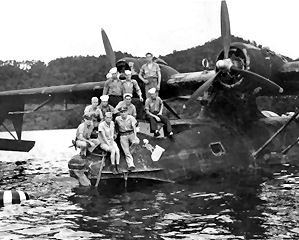 McIntyre’s
service history, not the least of which is a cap he wore as a crew
member of his beloved Catalina PBY-6A 43 Squadron RAAF Black Cat.
McIntyre’s
service history, not the least of which is a cap he wore as a crew
member of his beloved Catalina PBY-6A 43 Squadron RAAF Black Cat. .jpg)
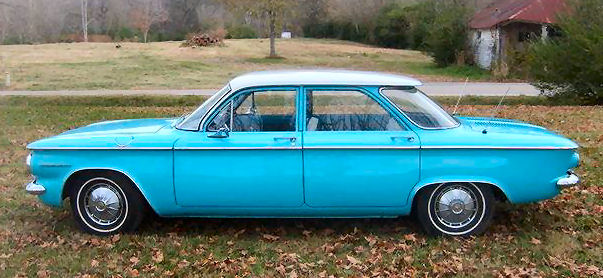


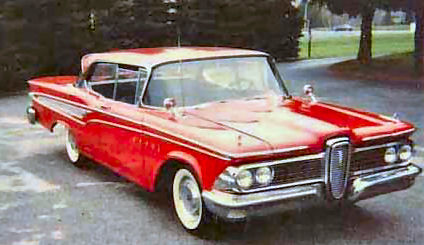
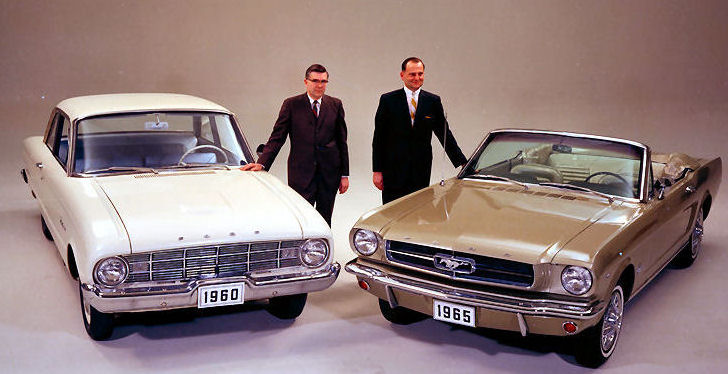
 the
idea of putting Ford's new 289 cubic inch V-8 into the engine bay of a
Falcon, and designing sporty new sheet metal around it, to create a
rival to the hot new Chevy Monza (left) in 1961. Market research was
used to sell the idea of the Mustang to Henry Ford II the following
year. That the car could be built using a lot of existing hardware
created for the Falcon helped the business case enormously.
the
idea of putting Ford's new 289 cubic inch V-8 into the engine bay of a
Falcon, and designing sporty new sheet metal around it, to create a
rival to the hot new Chevy Monza (left) in 1961. Market research was
used to sell the idea of the Mustang to Henry Ford II the following
year. That the car could be built using a lot of existing hardware
created for the Falcon helped the business case enormously.